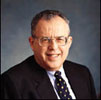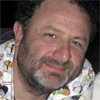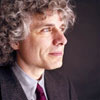reposted from Edge.org. Chris Street highlights/edits in bold.
HAIM HARARI
Physicist, former President, Weizmann Institute of Science

The Evolutionary Ability of Humankind To Do the Right Things
I am optimistic about the evolutionary ability of humankind to do the right things, even though it sometimes happens only after all possible mistakes are exhausted.
I am optimistic about technology and world leaders (in that order) discovering ways to combine energy savings and alternative sources of energy (in that order), so that our planet is saved, while we still have a reasonable standard of living.
I am optimistic about the irreversible trend of increasing the economic value of knowledge and decreasing the relative economic importance of raw materials, reducing the power of ruthless primitive dictators and increasing the rewards for education and talent.
I am optimistic about the emerging ability of the life sciences to use mathematics, computer science, physics, and engineering in order to understand biological mechanisms, detect and prevent medical problems and cure deadly diseases.
I am optimistic that more scientists will understand that public awareness and public understanding of science and technology are the only weapons against ignorance, faith healers, religious fanaticism, fortune tellers, superstitions and astrology, and that serious programs will emerge in order to enhance the contribution of the scientific community to this effort.
I am optimistic that, in the same way that Europe understood during the last Fifty years that education for all and settling disputes peacefully are good things, while killing people just because of their nationality or religion is bad, so will the Muslim world during the new century.
I am optimistic that we will soon understand that wise medical and genetic ethics mean that we should not absolutely forbid any technology and we should not absolutely allow any technology, but find ways to extract the good and eliminate the bad, from every new scientific development.
I am optimistic about the fact that an important fraction of the nations on this planet succeeded in refuting the extrapolations concerning a population explosion and I hope that the remaining nations will do likewise, for their own advancement and survival.
I am optimistic about the power of education to alleviate poverty and advance health and peace in the third world and I am hopeful that the affluent world will understand that its own survival on this planet depends on its own help to the rest of humanity in advancing its education.
I am not at all optimistic that any of the above will happen soon. All possible mistakes and wrong turns will probably be attempted. The weakest link is our chronic short sightedness, which is bad in the case of the general public and is much worse for its elected political leaders, who think in terms of months and years, not decades and certainly not centuries.



























